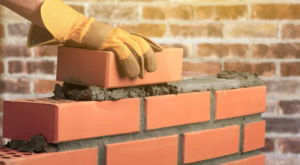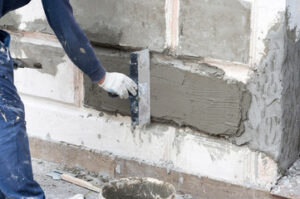Paving Companies Long Island work with large machinery like paving machines and excavators. These machines help repair soft areas of the road, driveway or parking lot by adding a binder layer that is then covered with asphalt.
Most paving customers don’t walk into your shop, they search for you online. Having a well-designed website is key to getting found by curious consumers who are ready to book your services.

- Preparation
Paving companies lay asphalt, a black, sticky substance derived from crude oil, onto surfaces to create durable roads and pavements. To do so, they must prepare the surface, which involves removing any existing structure or paving materials and cleaning up the area before beginning construction. It’s important for paving companies to grade the surface properly, since an uneven road or parking lot will cause problems for both pedestrians and vehicles.
When constructing an asphalt driveway or road, it’s essential that the surface is level and smooth. Otherwise, it will be uncomfortable for pedestrians to walk on, and vehicles will have to work hard to drive over the uneven road surface.
In addition, a level and smooth surface will also prevent water runoff from damaging the new pavement. To prevent this, a paving company will usually apply an erosion control product or a base course to the area prior to applying the asphalt.
An asphalt paving contractor will often use large equipment like forklifts and bobcats to remove any existing concrete or paved areas from the site. This is done so that the fresh asphalt can be applied over the top of the foundation layers, which will improve the structural integrity of the new surface and prevent any future issues with water drainage.
Once the site is clear, it’s time to start preparing the surface that will be covered with asphalt. This typically involves placing a base layer, which is a layer of aggregate material like crushed rock that’s compacted and topped with a binding agent, such as oil. The layer of binding agent helps to ‘glue’ the aggregate together, so that it stays in place as the asphalt is being laid on top of it.
Before the asphalt is put down, it’s important for the paving company to perform a test called a proof roll to ensure that the base layer has sufficient strength and that the pavement will be able to withstand heavy traffic without deforming or cracking. The proof roll also allows the paving company to determine if any additional preparation needs to be made, such as soil stabilization or adding a prime coat.
- Undercutting
Paving companies are in the business of creating new surfaces, including driveways and parking lots. These projects often require a large amount of earthwork to remove and prepare the area for laying the asphalt or concrete. This process is called undercutting and must be completed correctly in order to produce a high-quality finished product.
Because driveway paving is a costly investment that homeowners will be managing for years, they must ensure that they hire the right contractor to take on the project. The first step is ensuring that the contract clearly and concisely outlines the project scope, timelines, costs, benefits, and warranties. This can help prevent any disputes or misunderstandings down the road and ensure that all parties are on the same page from start to finish.
If homeowners are unsure where to start looking for a reliable contractor, they can ask their realtor for a recommendation or search online. In addition, many communities have homeowner associations that keep a list of trusted contractors to recommend to their residents. Homeowners can also ask friends and family members for recommendations or look at local paving company websites to get an idea of the quality and services they offer.
It is important for paving companies to focus on providing exceptional service to their customers. A bad review can have a huge impact on the profitability of a company, and research indicates that it takes 12 positive reviews to cancel out one negative one. For this reason, focusing on proactively collecting happy reviews from your clients through the Reputation Builder platform can help you offset the effects of a single unhappy review.
The paving industry is highly competitive, and the best way to stand out from the competition is with a strong online reputation. By leveraging the power of Reputation Builder, you can gain testimonials to display on your website automatically and encourage positive online reviews across Google, BBB, Facebook, and more. This will increase your visibility and credibility among potential clients, allowing you to win more business in the future. Click here to get started with Reputation Builder today!
- Binder Layer
A binder layer is like the “muscle” of asphalt and helps keep layers together. It is typically made of a mixture of aggregate and oil, which makes it strong and durable. Once the sub-base is properly graded and compacted, it’s ready for the binding layer. This is followed by a process known as a proof roll, which tests the integrity of the base layer to ensure that it’s strong enough for the surfacing stage. If any soft spots are found, steps are taken to repair them before proceeding.
Once the binder is down, a final layer of hot mix asphalt is applied to the surface. This is commonly referred to as the “wearing course” and provides the surface for the road. The type of asphalt chosen for this layer is often a personal choice based on cost and durability considerations. Asphalt is the most common, but concrete is also an option for some jobs.
As a paving company, you’ll need to invest in the proper equipment to get the job done right. You’ll need a variety of tools such as shovels, wheelbarrows, power sweepers, and tamping machines. You’ll also need safety gear for your employees, including hard hats and reflective jackets. Look for deals on paving supplies online or build relationships with local hardware stores that specialize in these types of materials.
In addition to specialized equipment, paving companies will need a commercial general liability insurance policy. This is an important factor when it comes to securing work, especially for projects with government contracts. In some cases, a paving company may be required to obtain a bond before it can be considered for a contract. The amount of bonding needed can depend on a number of factors, such as the company’s working capital and total net worth.
Marketing your paving business is essential to attracting new customers and building your reputation as a reputable tradesperson in your community. A great place to start is by joining Checkatrade. This will allow you to showcase your work, business credentials and customer testimonials to millions of people looking for local tradespeople on a daily basis.
- Paving
The paving process involves several different steps. A paving company must prepare the area before they can begin laying the new surface. This includes removing any existing material and preparing the sub base. The sub base is essential in ensuring that the asphalt will hold up well against erosion, traffic, and weather. The paving company may also do an additional test known as a proof roll to ensure the sub base is working well.
After the sub base is prepared, the paving company will then add a layer of binder to help the asphalt adhere to it. After the binder is added, the paving company will lay the final asphalt layer. This is typically a combination of aggregate, fillers, and binders. It is then compacted with a heavy roller to make sure there are no air pockets and that the final product will be strong and durable.
Once the paving is completed, it needs to be allowed to harden before driving or walking on it. This can take a few days or a week, depending on the size of the project. The paving company will work with the client to create a maintenance plan that includes regular sweeps or washings, which can prevent damage and keep the pavement looking great for a long time.
If you’re in the market for a new asphalt driveway, be sure to reach out to a local paving company for an estimate. They can provide a free quote and answer any questions you might have. A good place to start is with your real estate agent, who will likely have a list of contractors that they trust and use for their clients. You can also ask friends and neighbors for recommendations. If you live in a homeowner’s association, they will likely have a list of trusted contractors as well.
A paving company can add value to your home or commercial property with a smooth, durable new asphalt surface. They can also add curbs, gutters, and sidewalks to your project for a finished look that’s sure to impress your visitors and customers.





